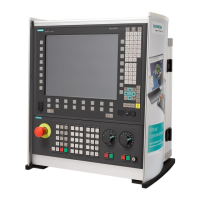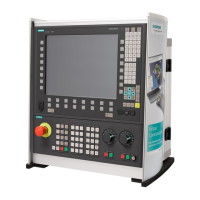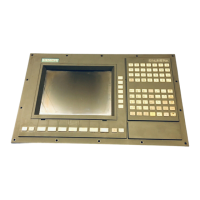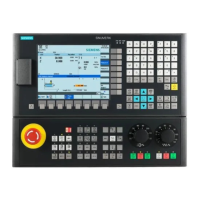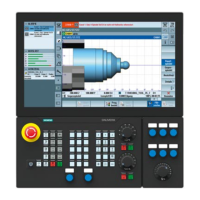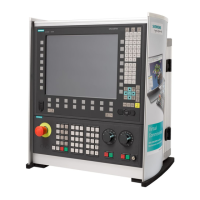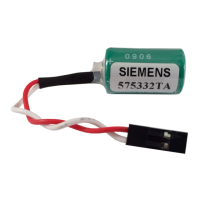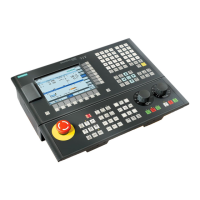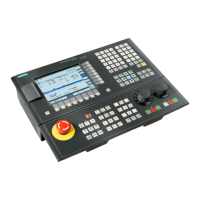10
03/2006
10.4 Frequency response measurement
10-189
© Siemens AG 2006 All Rights Reserved
SINUMERIK 840D/810D Start-Up Guide (IADC) – 03/2006 Edition
Amplitude
This parameter determines the test signal amplitude. It should be set to the
smallest possible value (e.g. 0.01 mm).
Offset
The measurement requires a low speed offset of just a few motor revolutions
per minute. The offset must be chosen so that the speed does not pass through
zero at all at the set amplitude.
Bandwidth
Setting for the analyzed frequency range (no more than half the position control-
ler scanning frequency). The lower this value, the finer the frequency resolution
and the longer the measurement time. The maximum value corresponds to half
the position controller sampling rate (e.g. 200 kHz with position controller sam-
pling time of 2.5 ms).
Averaging
This value increases both the accuracy of the measurement and the measuring
duration. A value of 20 is normally suitable.
Settling time
Recording of the measured data starts after a delay equal to the value set here
after the offset and test setpoint are activated. A value of between 0.2 and 1 s is
recommended. Do not set too low a value for the settling times or the frequency
response and phase diagrams will be distorted.
Initiation of the step change and the ramp can be used to assess the transient
response or positioning response of the position control within the time range,
particularly the effect of setpoint filters. If an offset value other than zero is input,
the step change is stimulated during traversal. For the sake of clarity, the dis-
played position actual value does not include this speed offset. The following
measured variables are possible:
S Actual position value (active position measuring system)
S Control deviation (following error)
Amplitude
This parameter determines the magnitude of the set setpoint step change or
ramp.
Offset
The step change is initiated from the stopped state or starting from the constant
traveling speed set with this parameter.
Measuring time
This parameter determines the recorded period (up to 2048 x position controller
cycles).
Settling time
Recording of the measured data and outputting of the test setpoint start after a
delay equal to this value after the offset is activated.
Ramp time
For the Setpoint ramp basic setting, the position setpoint is set according to the
set ramp duration. In this case, the acceleration limits which currently apply to
the axis or spindle are effective.
A jerking motion can be set using the axis-specific NC-MD 32410
AX_JERK_TIME (if NC-MD 32400 AX_JERK_ENABLE is set to 1).
Measuring
parameters for
reference
frequency
response
Setpoint step
change and
setpoint ramp
Measuring
parameters for
setpoint step
change and ramp
10 Drive O
timization
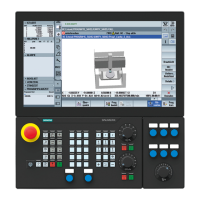
